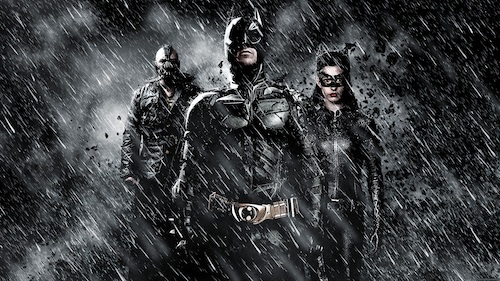Arts & Entertainment
‘Dark Knight’ of the soul
Trilogy finale of Batman reboot conflicted, intensely satisfying
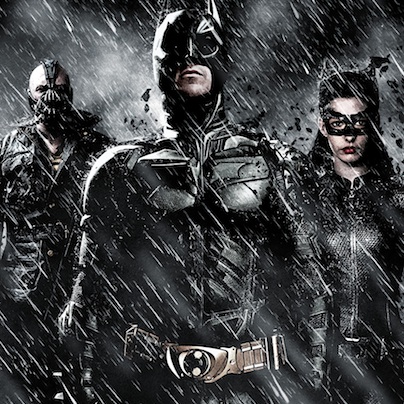
Director Christopher Nolan’s “The Dark Knight Rises” leaves you emotionally drained, exhausted and in a daze when the film ends. Nolan, who co-wrote with his brother Jonathan, expertly toys with current widespread fears of a pending apocalypse and squeamishness over talk of waning American hegemony in this spectacular finale to his Batman trilogy.
“The Dark Knight Rises” has a brooding, moody beginning set eight years after “The Dark Knight.” Bruce Wayne (Christian Bale) is out of the public eye and withdrawn from society and Batman is a faded memory. Gotham still mourns the loss of District Attorney Harvey Dent when Bane (Tom Hardy) interrupts any reflection on the past by reintroducing newfound terror to the city.
Hardy delivers an exceptional performance as Bane, especially considering he’s the follow-up villain to Heath Ledger’s brilliantly disturbing (and Oscar winning) interpretation of the Joker in “The Dark Knight.” Bane is a hulking mass of muscle with a militaristic breathing device surgically attached to his face, which mechanically provides his voice a diabolical intonation while alleviating the agony of a past facial disfigurement.
Bane at first appears like another greedy aggressor after the Wayne Enterprises empire, with the help of a corrupt board member of the company and a master thief in cat ears, Selina Kyle (Anne Hathaway). The extent of his desire to destroy is revealed by his master plan involving the nuclear reactor of Wayne’s clean energy initiative.
Bruce ditches his unkempt hermit look and squeezes back into the bat suit, but in doing so, is forced to confront the personal struggles that have been with him since the trilogy’s start in “Batman Begins.” Although butler Alfred (Michael Caine) refuses to watch Batman meet his death in another mission to save Gotham, Bruce finds help from faithful weapons expert Lucius Fox (Morgan Freeman), policeman and fellow orphan John Blake (Joseph Gordon-Levitt) and the new CEO of Wayne Enterprises, Miranda Tate (Marion Cotillard).
Even the cunning and calculating Catwoman comes around. From her first appearance in disguise as an obedient maid who steals Bruce’s mother’s pearls, Hathaway has as much charisma as the two actresses who played Rachel Dawes in the prior two Batman films combined. In their defense, the character Selina Kyle lends itself to far more dynamism and energy — let alone ass kicking — than Bruce’s past love interest.
Hathaway looks sexy and sinewy in her cat suit, but her character is not the objectified acknowledgement that gender roles are changing seen in most action films. She is funny, hardened and resourceful, and just as much a savior to Batman as he is to her.
Christian Bale delivers another excellent performance as Bruce Wayne that heavily draws on the previous two films. Bruce struggles with his inner demons that were intensely developed in “Batman Begins.” “Rises” is full of allusions to the death of his parents and even his childhood fear of bats resurfaces at a pivotal life-or-death moment. The death of Rachel Dawes and the destruction caused by the Joker in “The Dark Knight” hang over Bruce and he initially struggles with either resigning to his role as apathetic, entitled playboy or anonymous keeper of justice.
What’s so striking about Bale as Batman and Christopher Nolan’s directing of the franchise is that the hero’s humanity is constantly reiterated. Wayne’s often battered body, sad eyes and initial withdrawal from Gotham society make him much more complex than most heroes of his genre. Nolan seems to understand that in today’s world, trust in a perfect savior is passé.
“The Dark Knight Rises” continuously blurs divisions between good and evil, with even the brutal Bane showing a glimmer of humanity in the end. Nolan challenges our trust in the institutions we depend on through police ineptitude, corporate corruption and a horrifying sequence of explosions right after the singing of the National Anthem at a Gotham “Rogues” football game. At one point when the situation is beyond dire, an anonymous white male president offers empty, flagrantly rehearsed words of hope to the city.
Like most self-serious, epic films these days, “The Dark Knight Rises” is too long (2 hours, 40 minutes), but the plot is easy to follow and doesn’t drag. The special effects, action scenes and all of Batman’s toys also keep the proceedings engaging throughout.
Much of the film’s middle section is full of hopelessness and dread. The ending is heart-wrenching and visually stunning, but that’s not to say it isn’t bittersweet. That it’s an emotional mixed bag is part of what makes it such a satisfying conclusion to the franchise.
a&e features
Local, last-minute holiday gift ideas
Celebrate the season while supporting area businesses

The DowntownDC Holiday Market is bustling. Union Station is decked out with its annual Christmas tree. Washingtonians have wrapped their houses and apartment balconies with festive lights and holiday decorations. The holiday season is here. And with stockings to fill and empty space under the tree, Washington’s local shops and artists have plenty to offer.
Show your LGBTQ and D.C. pride with the Washington Blade’s annual holiday gift guide.
To embrace the holiday buzz: The Blanco Nwèl cocktail from Alchy Cocktails. This Caribbean eggnog is one of Alchy Cocktail’s seasonal holiday cocktails. The flavor profile is similar to coquito, a traditional Puerto Rican Christmas drink with a coconut base. As a queer and Caribbean-owned business, Alchy Cocktails has been based out of Washington since 2021. Blanco Nwèl is available in both cocktail ($24) and mocktail ($12) online and at a variety of holiday markets, including the Tingey Plaza Holiday Market, the Flea Market at Eastern Market, Union Station’s Main Hall Holiday Market, and more. ($24)

A spicy bite: Gordy’s Cajun Okra from Salt and Sundry. These spicy, tangy pickles pull on Southern Cajun-style flavors, packing a punch with paprika, cayenne, and more. Gordy’s is an LGBTQ-owned and Washington-based brand, making this gift an opportunity to support a local LGBTQ business straight from the jar. This pantry staple is available on Salt & Sundry’s website and at its locations in Union Market, Logan Circle, and its Georgetown holiday pop-up store. ($14)


To celebrate Washington pride: The DC Landmark Tote Bag from The Neighborgoods. Native Washingtonians, visitors, friends and family alike will find something to love about this Washington-themed tote bag. Food trucks, the 9:30 Club, the Metro logo and pandas from the National Zoo are just some of the city’s landmarks depicted across the tote in a red, white, and blue color palette. The tote is a part of the DC Landmarks collection, which donates 10 percent of its sales to the American Civil Liberties Union. The Neighborgoods itself is a local, woman-owned business built out of a passion for screen-printing in 2013. The 100 percent cotton canvas tote is for sale online or at the DowntownDC Holiday Market. ($22)
To give friends and family their flowers: The Flowers Bandana from All Very Goods. This 100 percent cotton bandana was designed in Washington and hand printed in India. Its uniqueness comes in being covered with the faces of Black women, representing a “love letter to all women but especially Black women,” according to All Very Goods. The Black woman-owned and operated business, based out of Northwest Washington, has a mission to celebrate diversity and representation through its products. The bandana intends to give Black women their “flowers.” The Flowers bandana is available for purchase online. ($24)

To unlock culinary creativity: The Curious Chef Gift Collection from Each Peach Market. This customizable collection of kitchen oddities — ranging from tinned fish to chili oil — is a quirky gift for the most inventive chefs. The collection is available in a Standard Santa, Extra Goodies and Super Holiday Size for up to $165. The Washington-based market, founded in 2013, permits customers to make the collection special by specifying what unique ingredients are packaged, including products made by local or LGBTQ brands. Each Peach Market offers assembly and pick up in-person at its Mount Pleasant shop and also offers local delivery and nationwide shipping via its website. ($85)

To give a touch of sweetness: The DC Landmark Chocolate Covered Oreo Holiday Cookies from Capital Candy Jar. Wrapped in a festive red bow, this box of nine cookies embraces love for Washington and the holiday season in one. Among the dark and milk chocolate covered cookies are images of the U.S. Capitol, the White House, the Lincoln Memorial, the Jefferson Memorial and festive hollies. The treat, packaged in a Hill East facility just a few blocks from the Capitol, is available for purchase online and at the DowntownDC Holiday Market. ($23.95)


To celebrate queer gaming: Thirsty Sword Lesbians from Labyrinth Games & Puzzles. This roleplaying game embraces lesbian culture by unlocking a world of swords, romance, and battle. Ideal for group settings, the book presents a system of world building and character identities that are best brought to life by creative minds. Labyrinth, which has been a local Washington business for more than 15 years, celebrates non-digital fun through games and puzzles that connect the community. This gift is offered online and at Labyrinth’s Capitol Hill location. ($29.99)
To make a bold statement: The “Resist” T-shirt from Propper Topper. This locally screen-printed black tee features the Washington flag designed within a raised fist, symbolizing both Washington pride, and political resistance. The shirt is made exclusively by Propper Topper, a local Washington business that evolved from a hat shop to a gift store since opening in 1990. The tri-blend unisex shirt is available both for pickup at Propper Topper’s Cathedral Heights location and shipping via the online site. ($32)
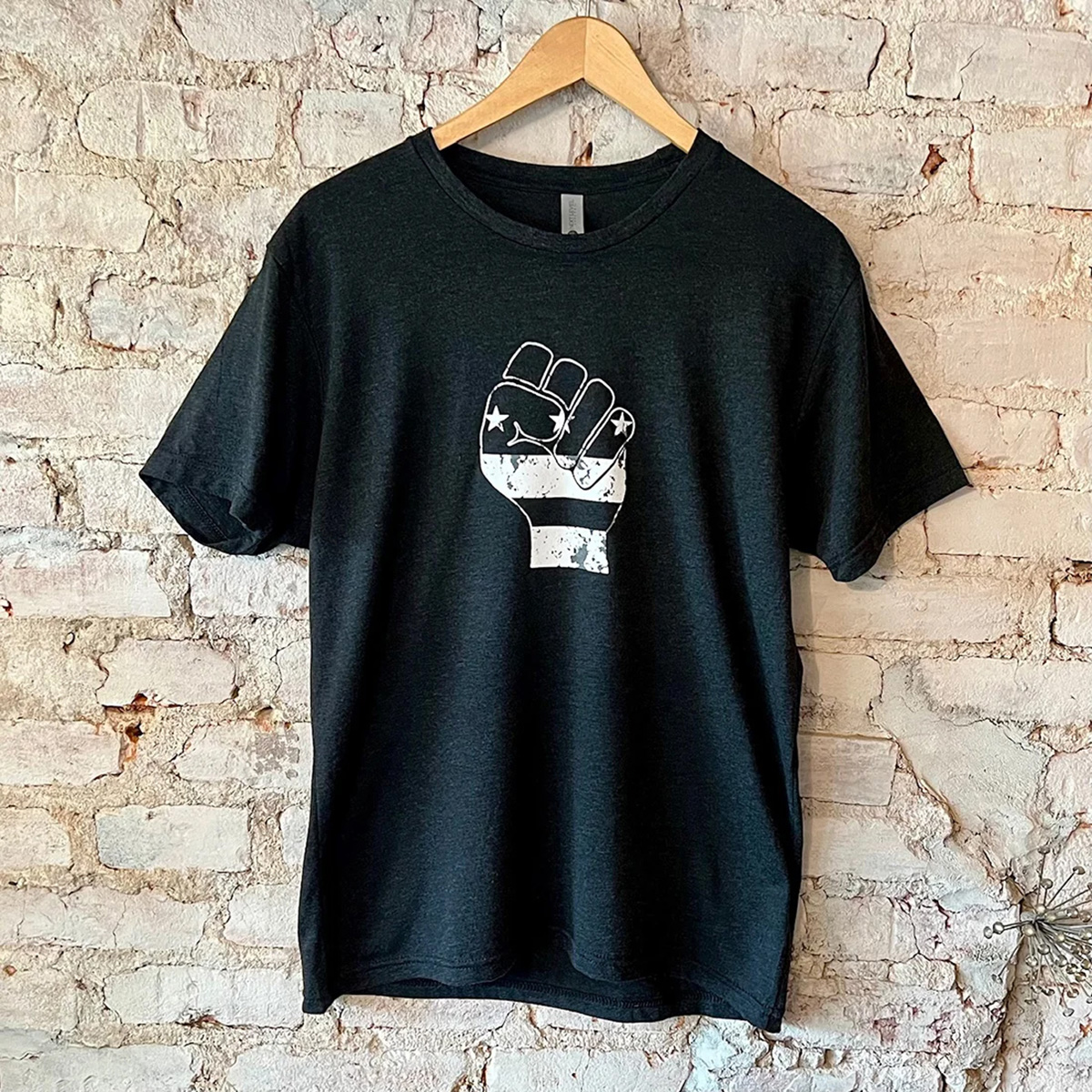
To keep it c(g)lassy: The Glass Ball earrings from Blue Moon Aquarius. Gifting can rarely go wrong when it comes to a new pair of earrings. The unique statement earrings — made of polymer clay, glass, and 18k gold plating over surgical steel — are hand cut, sanded and assembled in Washington, meaning each set is unique. Blue Moon Aquarius, a local brand, is known for its small batch jewelry and home decor designed with clay materials. Available in oxblood, hunter green, lavender, and bluestone color palettes, these earrings are available for purchase on Blue Moon Aquarius’ website and at the DowntownDC Holiday Market. ($48)

To elevate a holiday tea or charcuterie party: The Honey Flight: Tea Lover’s Selection from BannerBee. This local honey company presents the ideal gift to make cozying up with a cup of tea slightly more special. The Honey Flight contains three types of raw wildflower honey infused with fair trade Ugandan vanilla bean, chai spices, and locally sourced lemon thyme herb. The gift is also an opportunity to uplift a family company based in the Mid-Atlantic that offers all-natural, sustainable products. The flight is available online, at the DowntownDC Holiday Market or at the Arlington Courthouse and Dupont Farmers’ Markets. ($36)

For Baltimore shoppers: If you’re in Charm City, don’t miss Balston Mercantile, opened by a gay couple in June. Their gorgeous shop in the Hampden neighborhood offers an array of unique, upscale finds, from barware and artwork to cookbooks and home decor and more. (849 W. 36th St.)
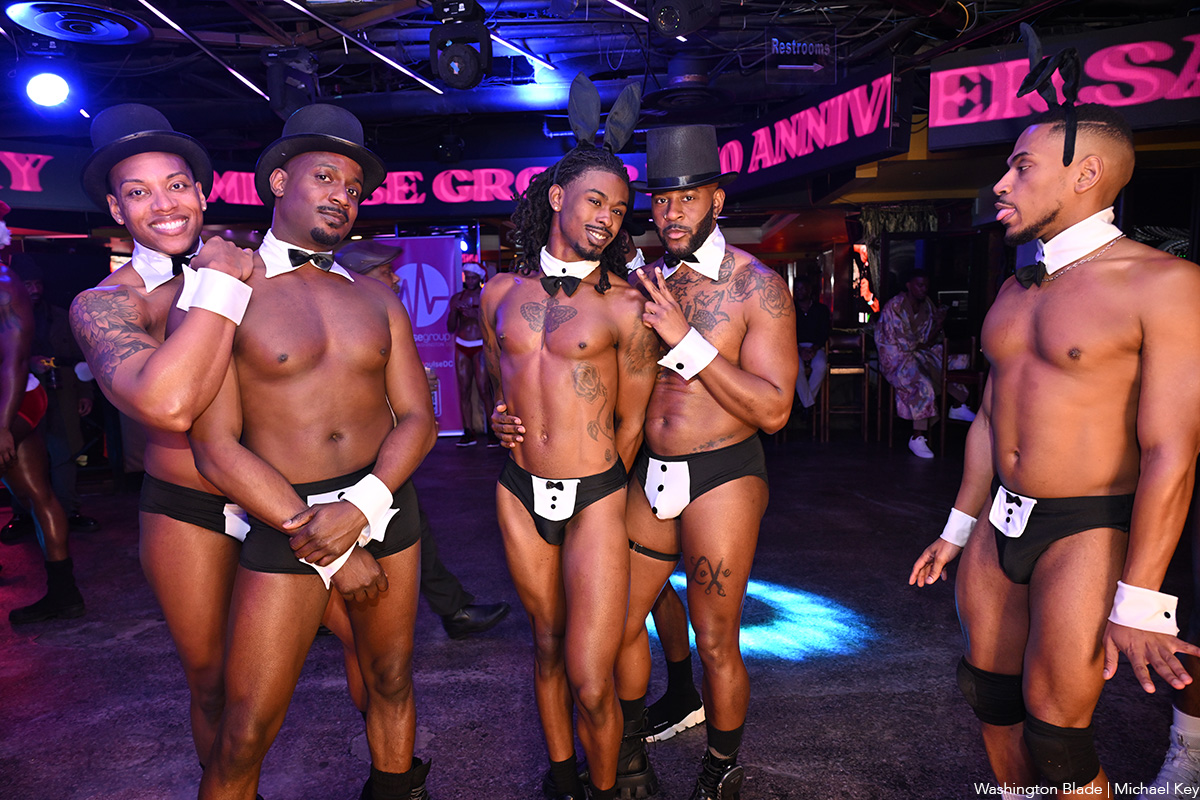
Impulse Group DC held “10’s Across the Board: A Celebration of 10 Years” at Bravo Bravo (1001 Connecticut Ave., N.W.) on Sunday, Dec. 14. Impulse Group DC is a volunteer-led 501(c)(3) and affinity group of AIDS Healthcare Foundation dedicated “to engaging, supporting, and connecting gay men” through culturally relevant health and advocacy work.
(Washington Blade photos by Michael Key)
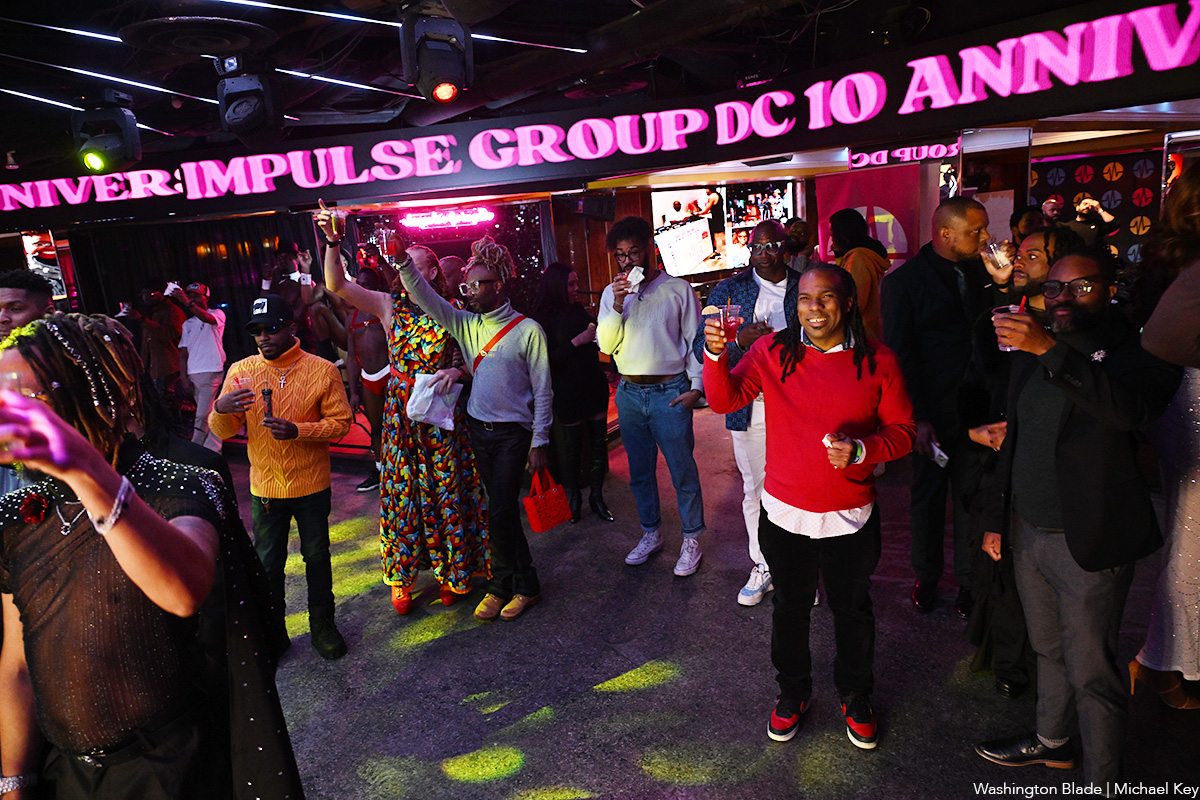
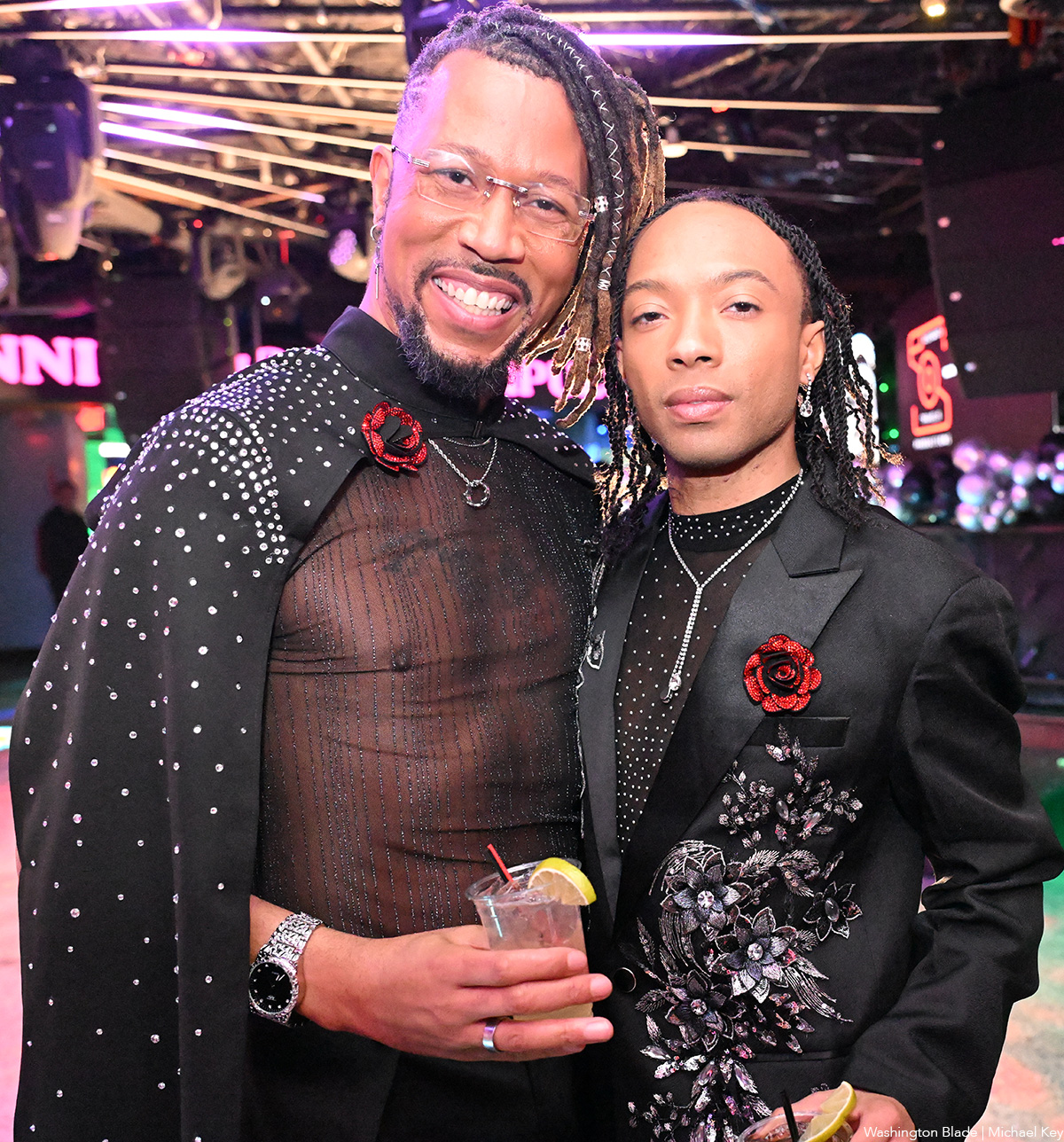
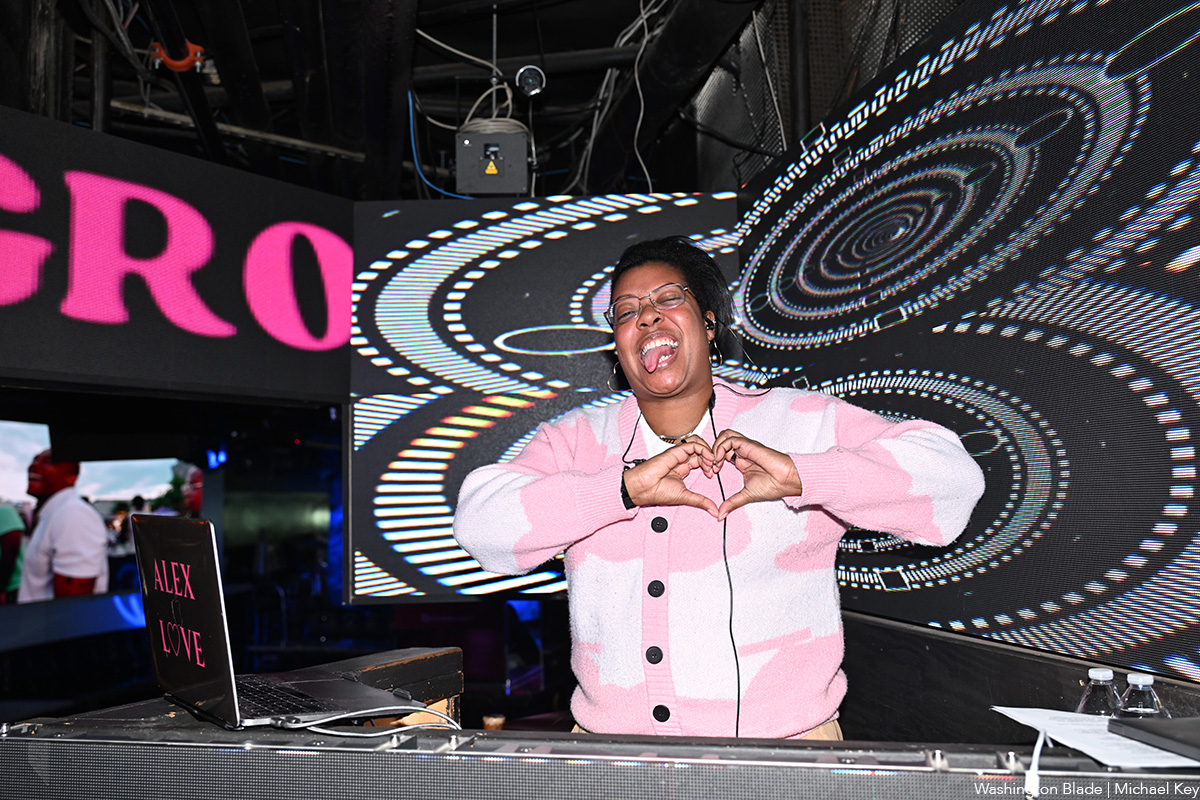
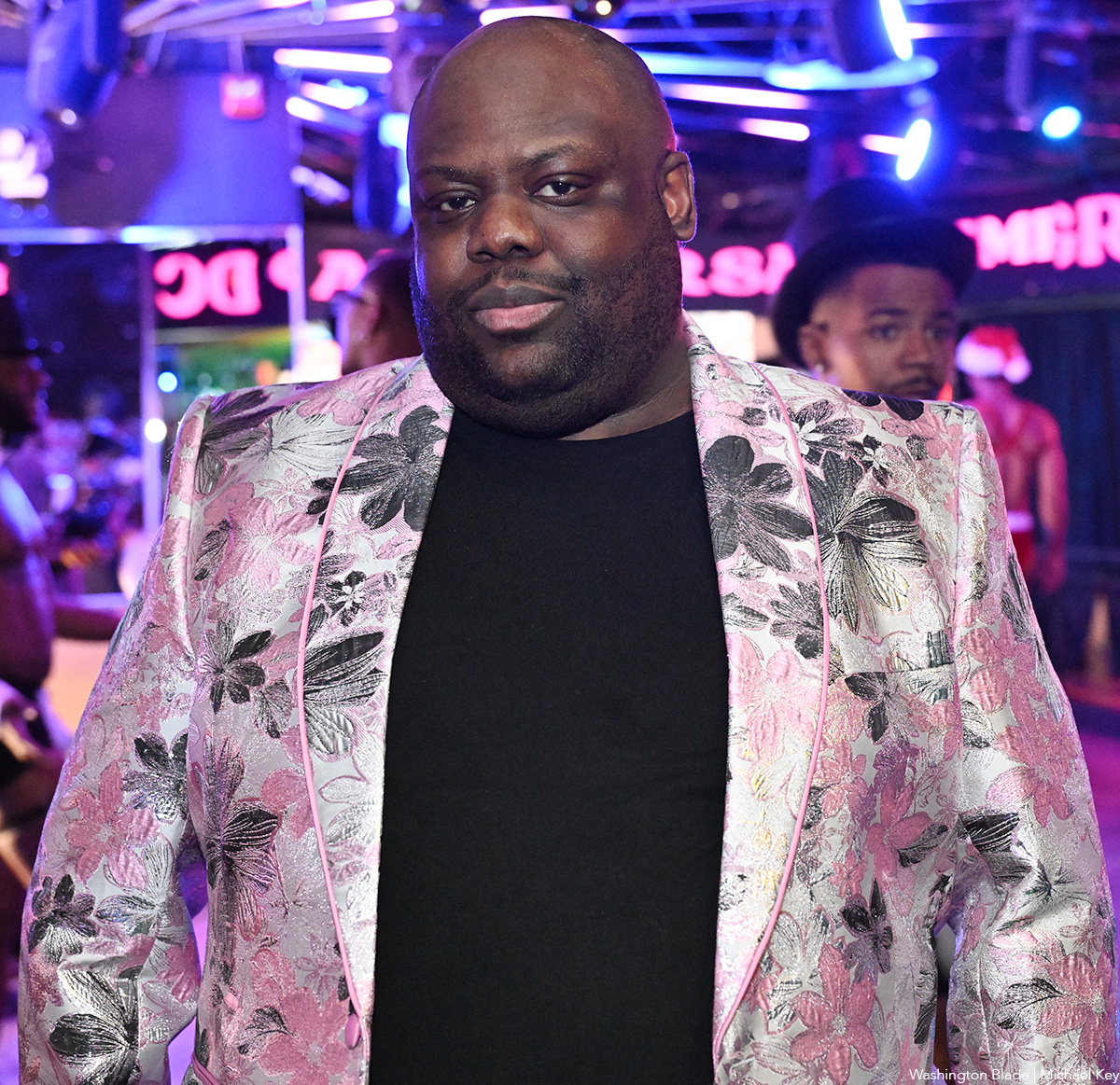

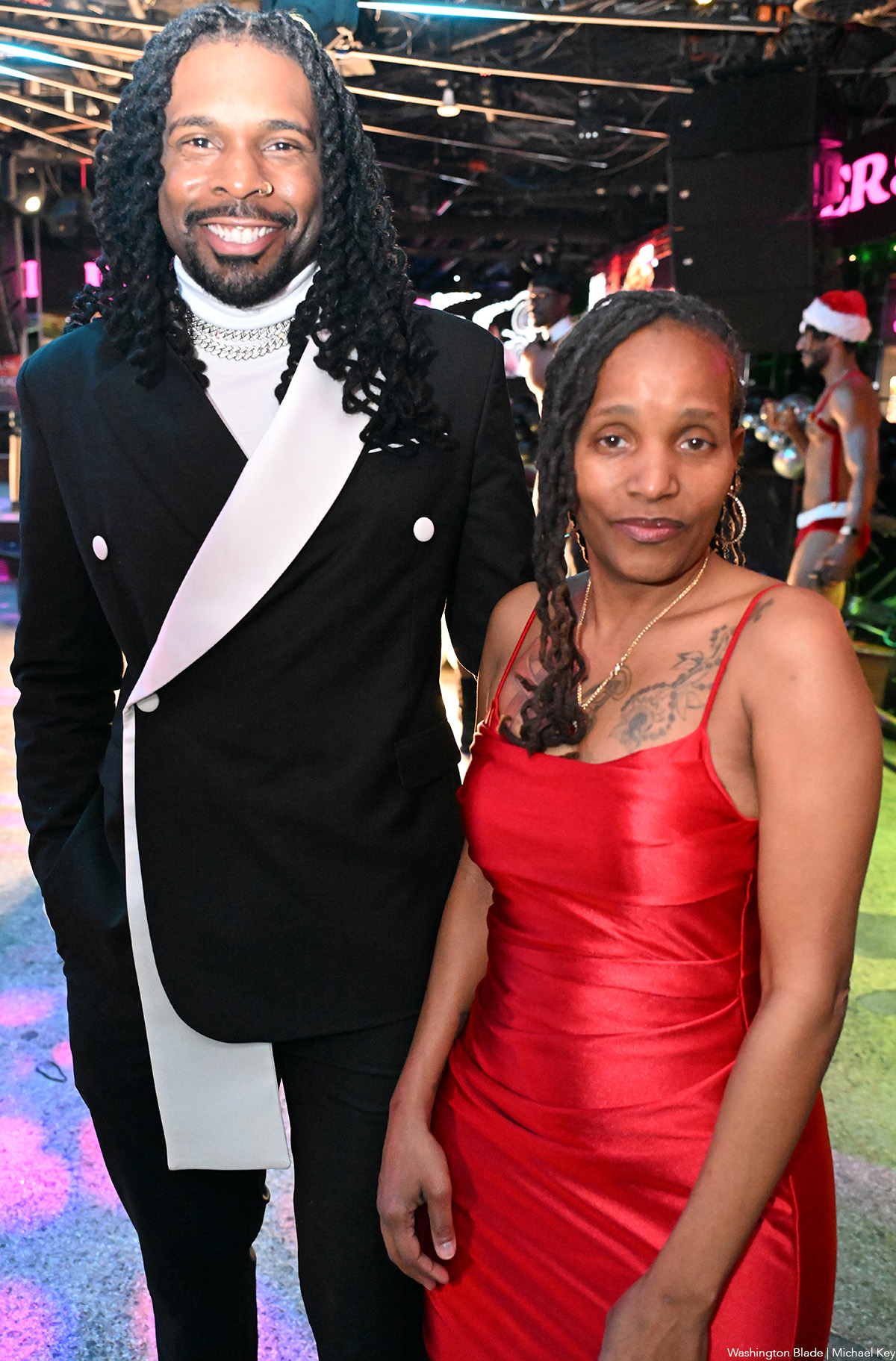
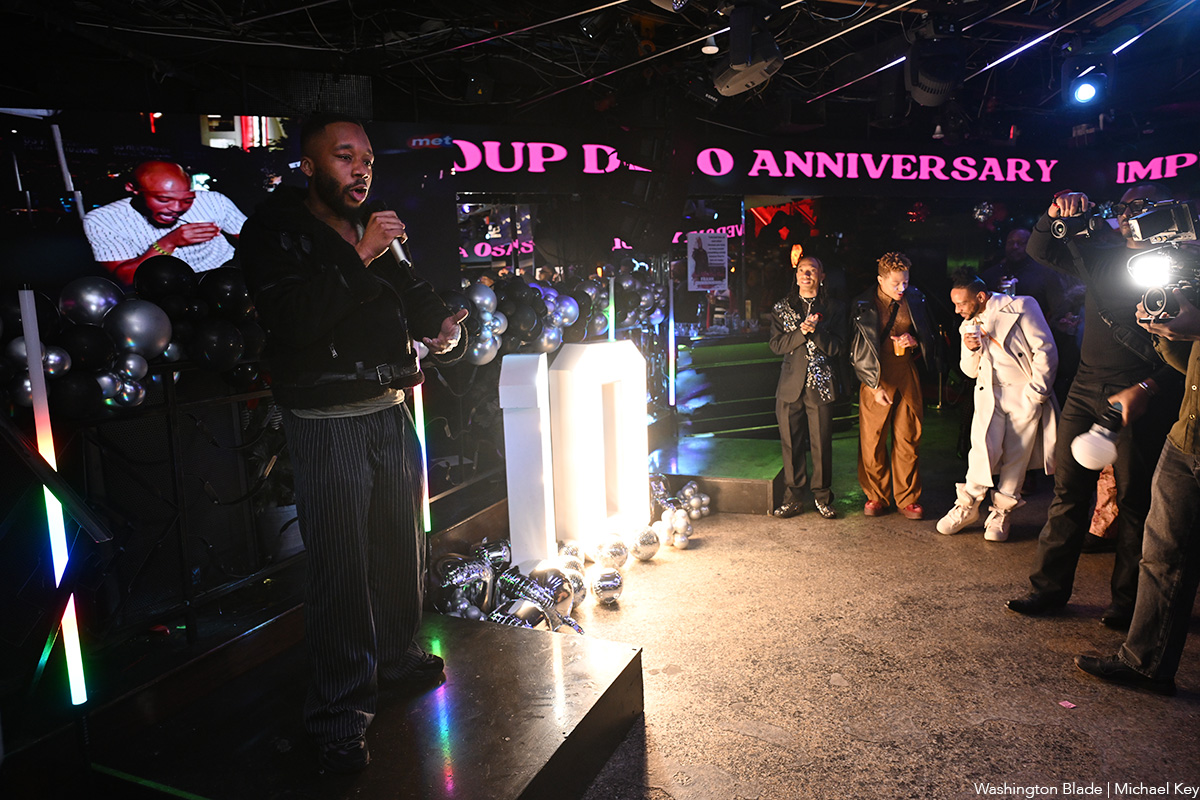
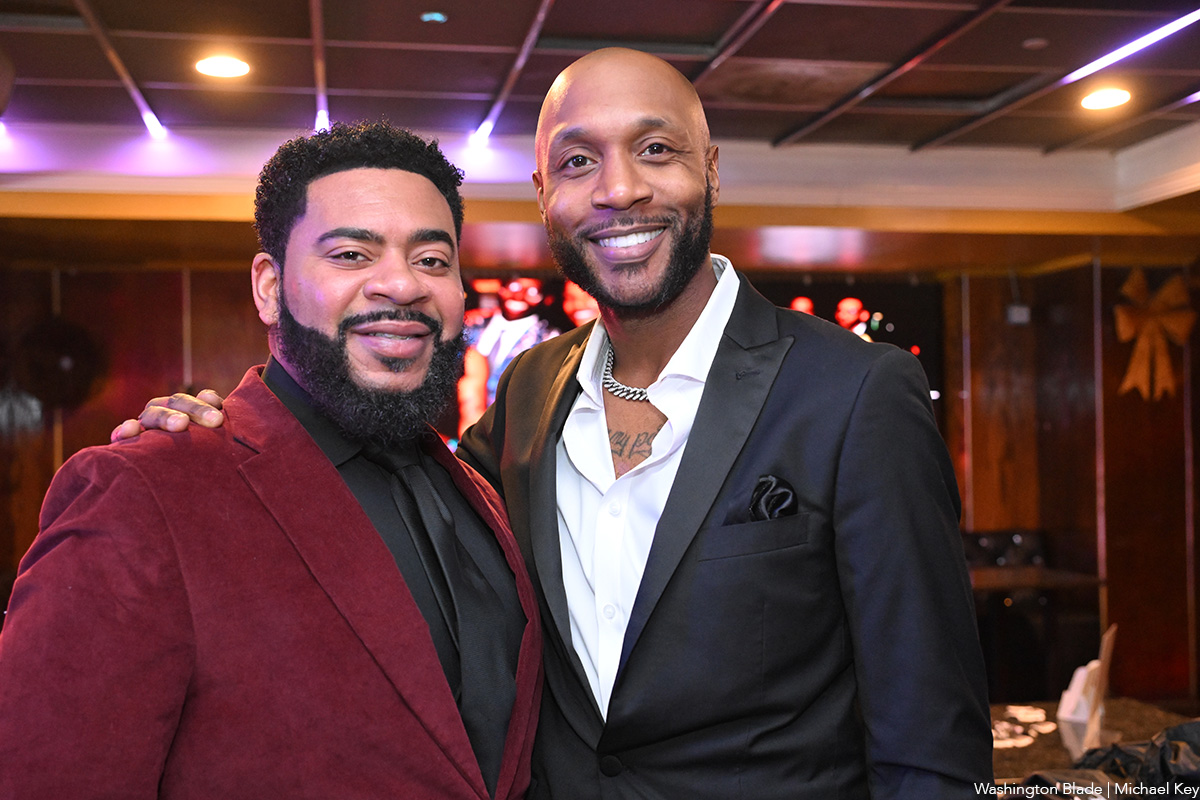
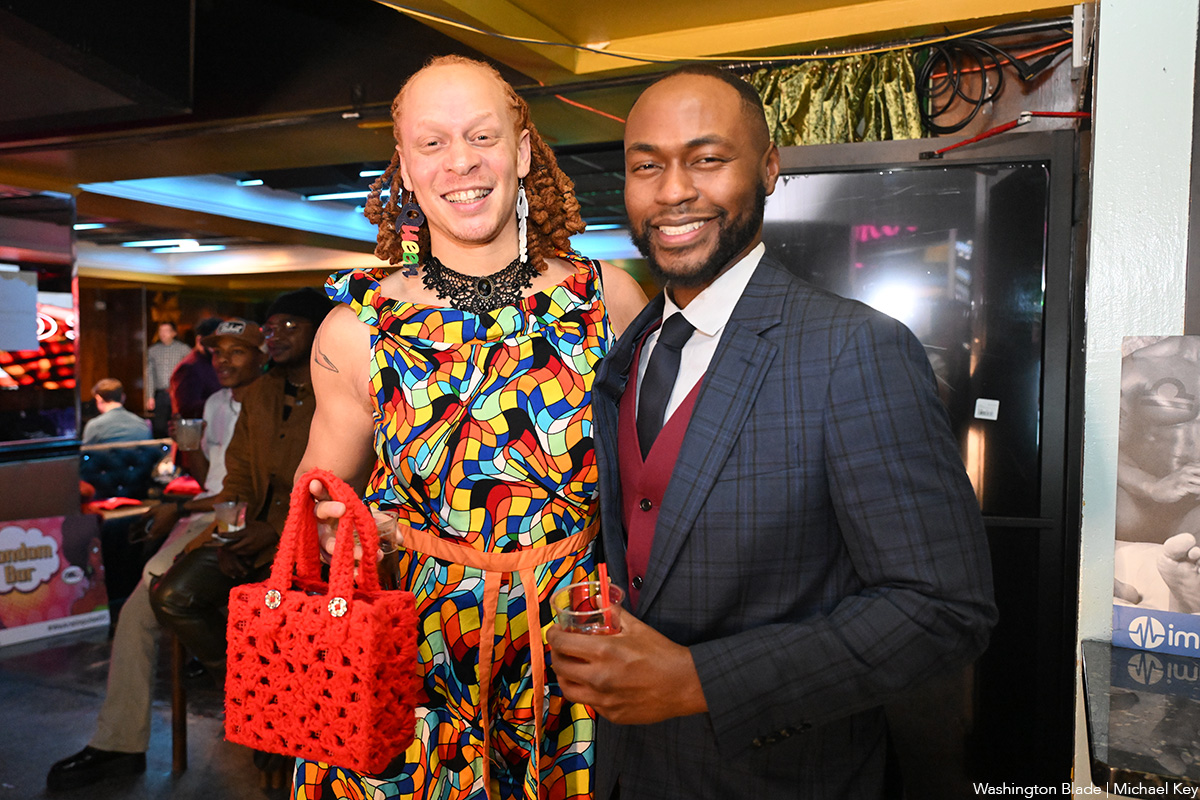
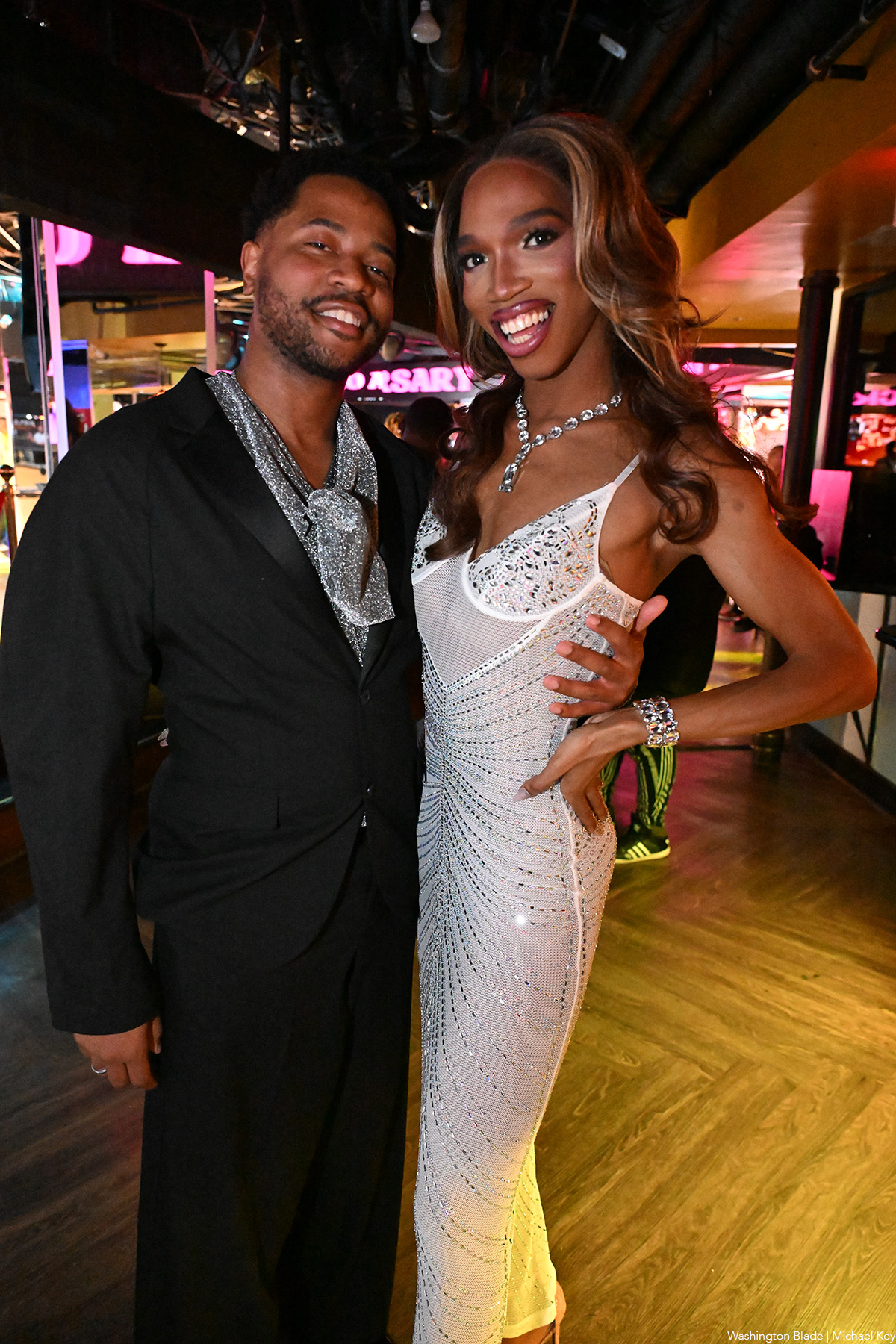
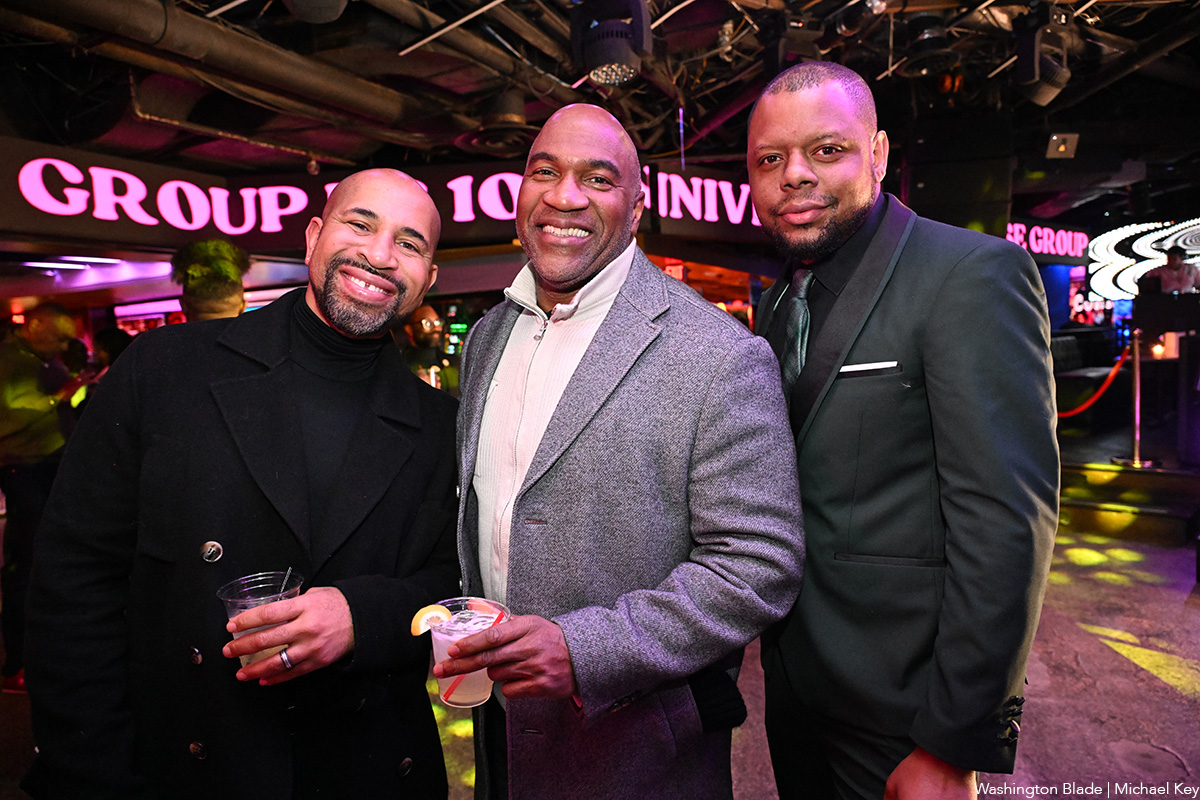
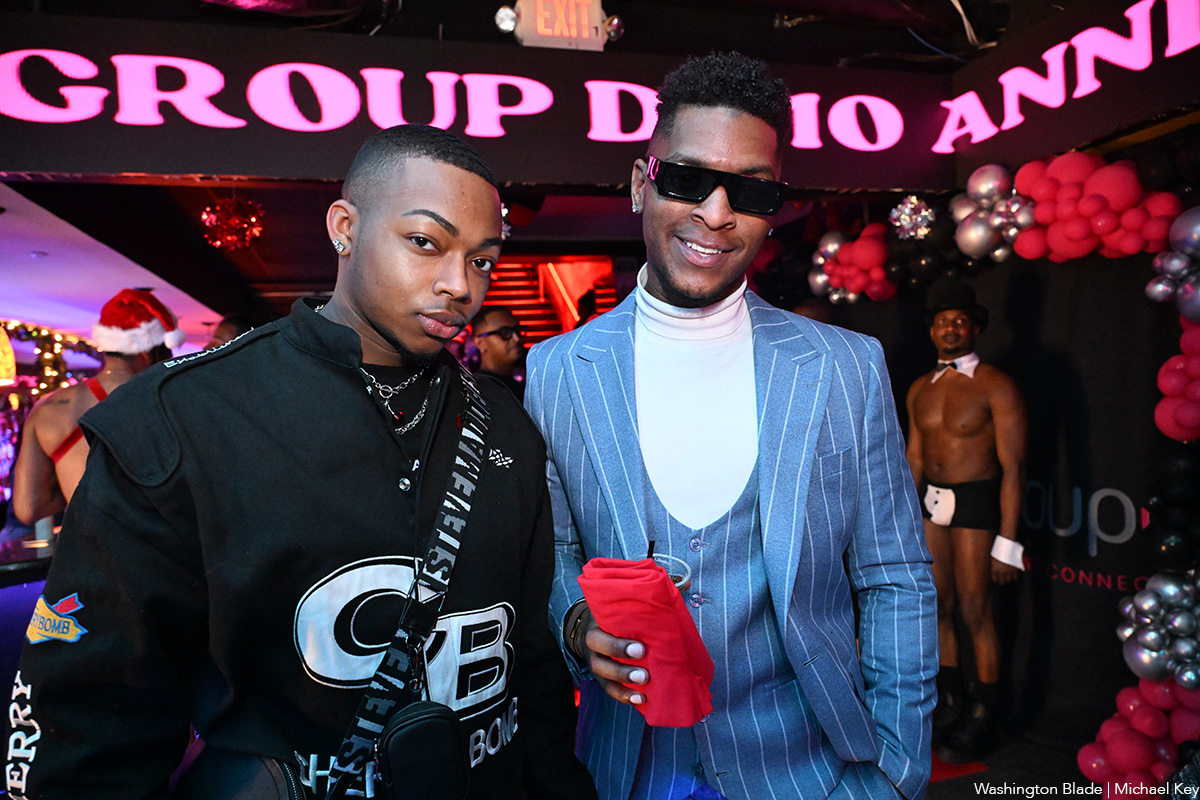
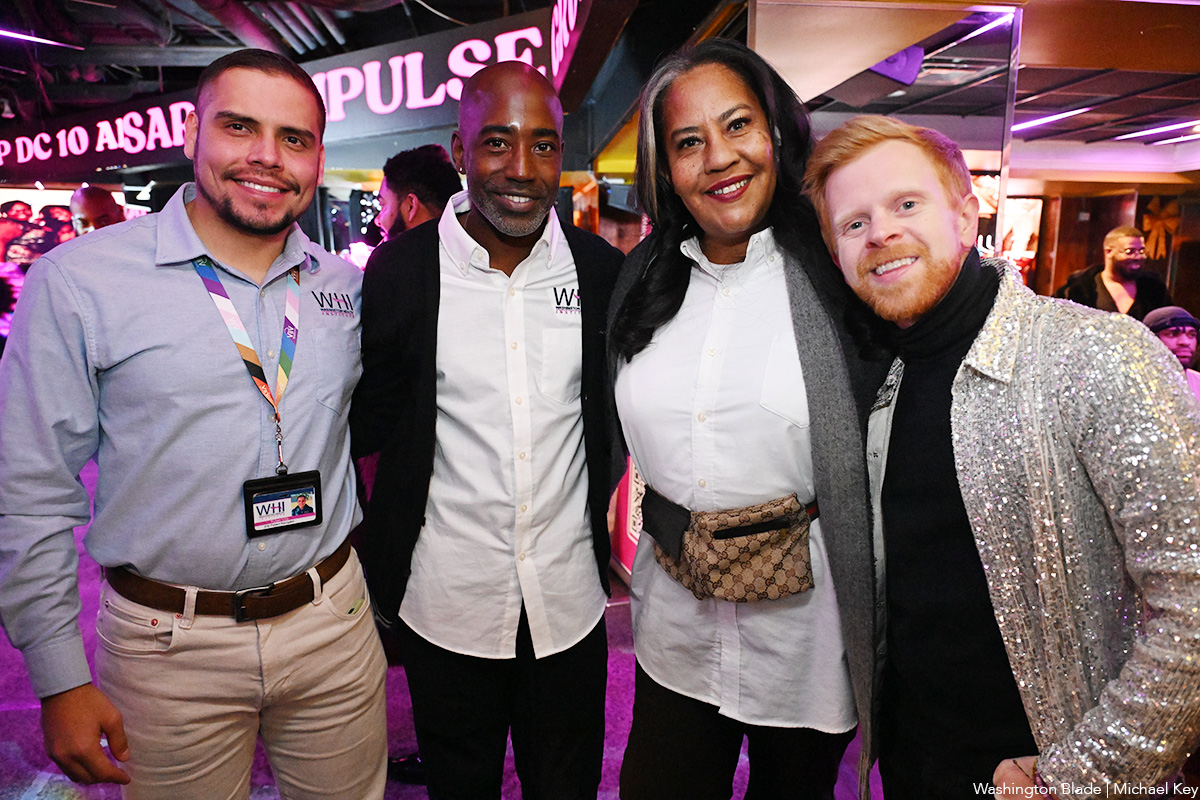

Rob Reiner, most known for directing untouchable classics like “The Princess Bride,” “Misery,” “When Harry Met Sally…,” and “Stand by Me,” died Dec. 14 alongside his wife, Michele Singer Reiner, in their Los Angeles residence. While investigations are actively underway, sources have told PEOPLE Magazine that the pair’s son, Nick Reiner, killed his parents and has been taken into custody.
Reiner was a master of every genre, from the romantic comedy to the psychological thriller to the coming-of-age buddy movie. But in addition to his renowned work that made him a household name, Reiner is also remembered as a true advocate for the LGBTQ community. In 2009, Reiner and his wife co-founded the American Foundation for Equal Rights, helping fight against California’s Prop 8 same-sex marriage ban. They were honored at the 2015 Human Rights Campaign Las Vegas Gala.
In a statement, HRC President Kelley Robinson said: “The entire HRC family is devastated by the loss of Rob and Michele Reiner. Rob is nothing short of a legend — his television shows and films are a part of our American history and will continue to bring joy to millions of people across the world. Yet for all his accomplishments in Hollywood, Rob and Michele will most be remembered for their gigantic hearts, and their fierce support for the causes they believed in — including LGBTQ+ equality. So many in our movement remember how Rob and Michele organized their peers, brought strategists and lawyers together, and helped power landmark Supreme Court decisions that made marriage equality the law of the land — and they remained committed to the cause until their final days. The world is a darker place this morning without Rob and Michele — may they rest in power.”
Reiner’s frequent collaborators have also spoken out as the industry is in mourning, including figures like Ron Howard and John Cusack.
A joint statement from Jamie Lee Curtis and Christopher Guest (who starred in Reiner’s “This is Spinal Tap”) reads: “Christopher and I are numb and sad and shocked about the violent, tragic deaths of our dear friends Rob and Michele Singer Reiner and our ONLY focus and care right now is for their children and immediate families and we will offer all support possible to help them. There will be plenty of time later to discuss the creative lives we shared and the great political and social impact they both had on the entertainment industry, early childhood development, the fight for gay marriage, and their global care for a world in crisis. We have lost great friends. Please give us time to grieve.”
While attending the 2019 HRC Los Angeles Dinner, Reiner spoke out about the need for equality: “We have to move past singling out transgender, LGBTQ, black, white, Jewish, Muslim, Latino. We have to get way past that and start accepting the idea that we’re all human beings. We’re all human beings, we all share the same planet, and we should all have the same rights, period. It’s no more complicated than that.”

